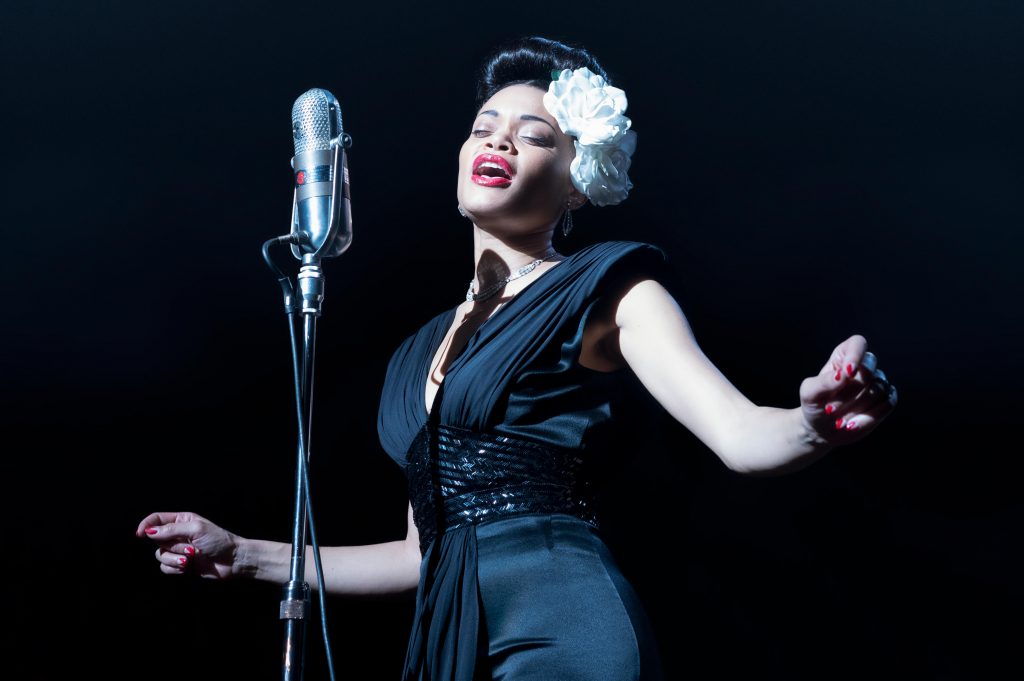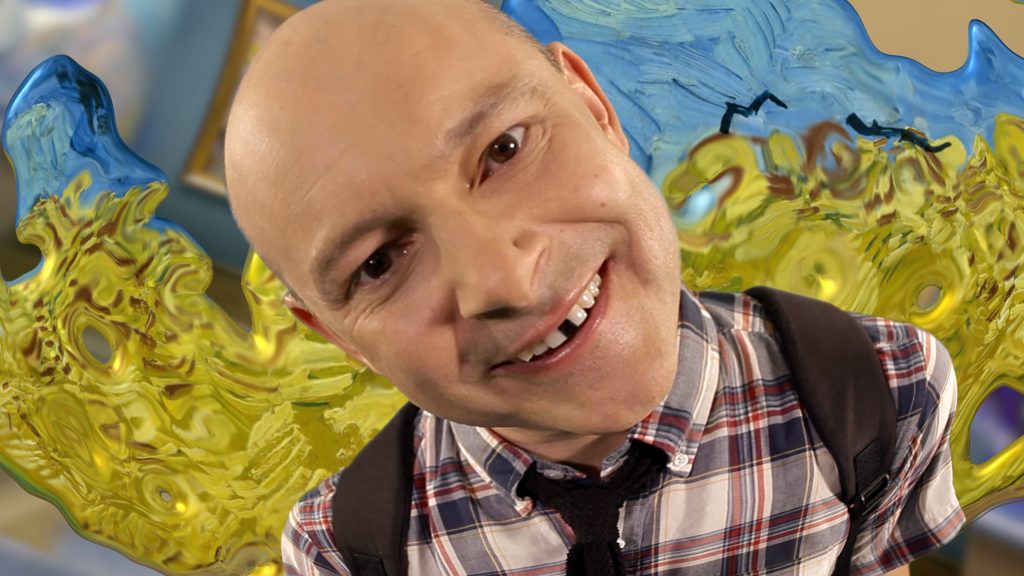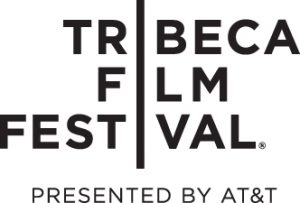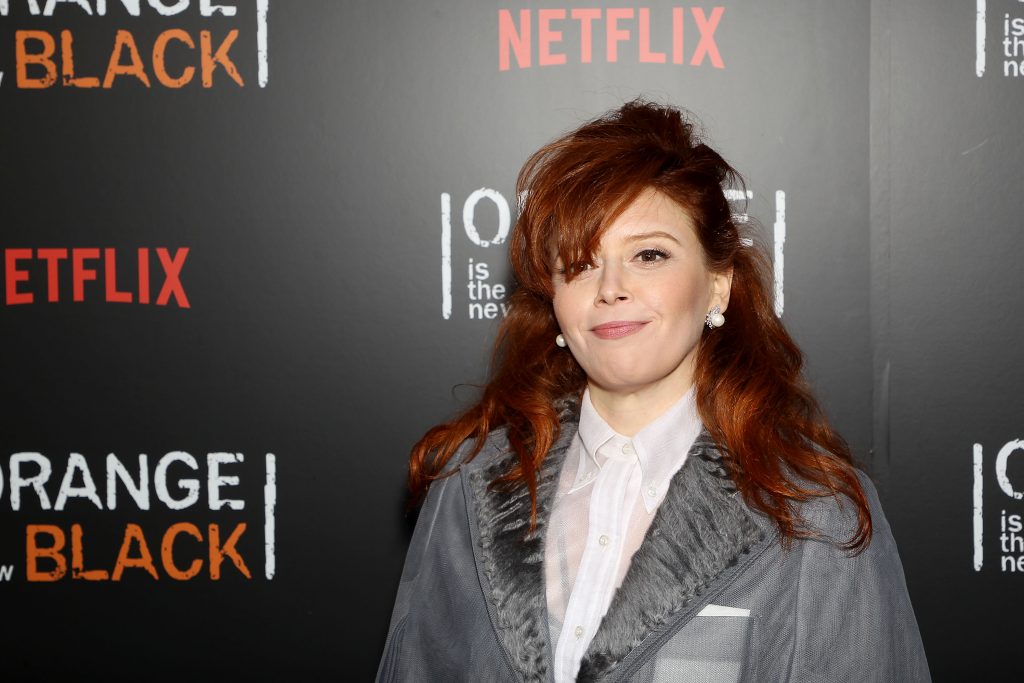November 23, 2022
by Carla Hay
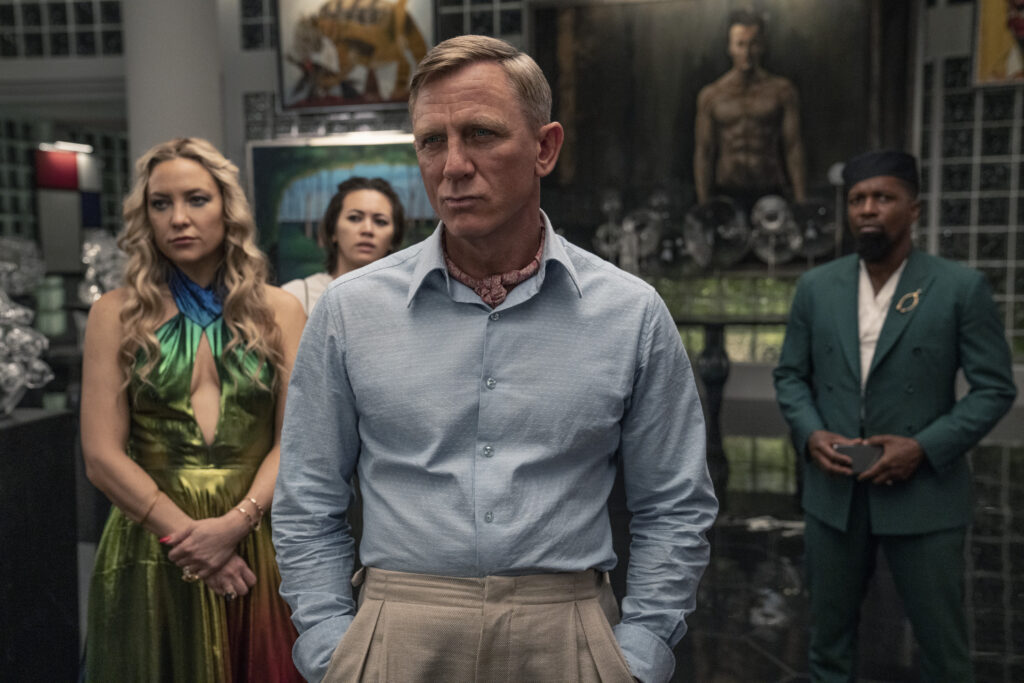
“Glass Onion: A Knives Out Mystery”
Directed by Rian Johnson
Culture Representation: Taking place in 2020, mostly on an unnamed island in Greece and briefly in the United States, the comedy/drama film “Glass Onion: A Knives Out Mystery” features a predominantly white cast of characters (with some African American and Asians) portraying the working-class, middle-class and wealthy.
Culture Clash: Southern gentleman detective Benoit Blanc is invited to the private Greek island of a technology billionaire, who is hosting a murder mystery party, where at least one person gets murdered for real.
Culture Audience: “Glass Onion: A Knives Out Mystery” will appeal primarily to people who are fans of 2019’s “Knives Out,” star Daniel Craig, and murder mysteries that are also incisive social satires.
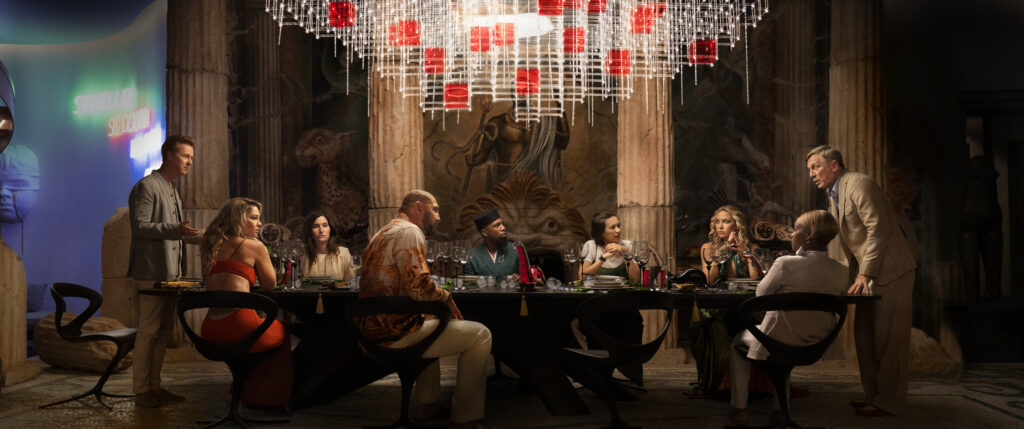
Simply put: “Glass Onion: A Knives Out Mystery” is a sequel that’s better than the original movie. This comedy/drama is a fantastic follow-up to 2019’s “Knives Out,” another comedically dark murder mystery with its central location being the home of a wealthy person. Both movies, which are self-contained stories written and directed by Rian Johnson, deliciously skewer arrogant, rich elitists and other people with bad attitudes, while American Southern gentleman detective Benoit Blanc (played by Daniel Craig) solves the murder mystery. “Glass Onion” had its world premiere at the 2022 Toronto International Film Festival.
Johnson has said in many interviews that his greatest inspirations for his “Knives Out” movie series are Agatha Christie mystery novels and movie adaptations of these novels. In that respect, Benoit is like an American version of Christie’s “world’s greatest detective” Hercule Poirot from Belgium—someone who can deduce and reveal complex details and secrets about other people’s lives, but his own personal life remains a self-guarded mystery. (Craig is British in real life, but you can tell he has fun with doing a leisurely American Southern accent when he’s in the role of Benoit.)
Because the “Knives Out” movies are self-contained, it’s not necessary to see the first “Knives Out” movie to understand “Glass Onion.” However, seeing “Knives Out” can give viewers a better appreciation of how “Glass Onion” is an improvement from the first “Knives Out” movie, which is enjoyable but more predictable than “Glass Onion.” (“Knives Out” received several accolades that comedic murder mystery movies rarely receive, including an Oscar nomination for Best Original Screenplay.)
In “Glass Onion,” several people from different parts of the U.S. have each received in the mail a mysterious box from American technology billionaire Miles Bron (played by Edward Norton), a pretentious blowhard who loves to name drop and show off his wealth. Miles, a bachelor who lives alone, has made his fortune from co-founding a company called Alpha Industries. The box that he has sent contains an elaborate puzzle that reveals an invitation to go to Miles’ private island home in Greece for a murder mystery party. In the invitation, Miles says that he will play the murder victim.
Benoit is one of the people who receives this box as a mail delivery. Later, when he gets to the party, he finds out in an awkward way that Miles didn’t actually invite Benoit. But now that Benoit is at the party, Miles doesn’t want Benoit to leave, because Benoit is just another celebrity whom Miles can brag about attending one of Miles’ parties. Who sent Benoit that box? That answer is revealed in the movie.
“Glass Onion” begins on May 13, 2020—the day that the boxes are delivered. It’s just a few short months into the COVID-19 pandemic, before a vaccine was available, and when mask-wearing and social distancing were becoming a way of life for people who cared to take those precautions. Some of the party guests are more concerned about the pandemic than others.
Before going to the party, Benoit is seen having a relaxing bath at his home. He’s on a videoconference call with an eclectic group of famous friends, such as Broadway composer Stephen Sondheim (who died in 2021), classical musician Yo-Yo Ma, actress Angela Lansbury (who died in 2022), retired basketball star Kareem Abdul-Jabbar and actress Natasha Lyonne, who all make these quick cameos as themselves in the movie. It’s in this scene that viewers see that Benoit likes to play quiz games with his friends during the pandemic.
The only other peek into Benoit’s personal life is when he’s on a videoconference call with a man named Philip (played by Hugh Grant), who seems to know a lot abut Benoit and his personal life. In this scene, viewers can speculate how close Benoit and Philip are to each other and what kind of relationship they might have. Ethan Hawke makes a brief appearance in the role of an unnamed Miles Bron employee, who sprays a COVID-19 medical screener inside each guest’s mouth when they arrive at Miles’ Greek island home. The implication is that this screener can make any possible COVID-19 symptoms disappear, and Miles is so rich, he can afford this medical treatment before it’s legally sold to the public.
Miles’ party guests have been transported by a private boat to the island, whose biggest building is a high-tech mansion that Miles has named Glass Onion. The property’s centerpiece is a giant glass structure shaped like an onion and located inside a glass atrium. (The onion can also be seen as a symbol of the story’s layers that get peeled to reveal the truth. The Beatles song “Glass Onion” is played during the movie’s closing credits.) Inside this nouveau-riche home are dozens of glass sculptures and gaudy indications that Miles is a narcissist, such as a giant portrait painting of a shirtless Miles that makes his physique look more athletic than it really is.
In addition to Benoit, the other people at this party are:
- Claire Debella (played by Kathryn Hahn), a progressive Democratic politician who is very image-conscious and currently running for re-election as governor of Connecticut.
- Lionel Toussaint (played by Leslie Odom Jr.), an experimental scientist who has recently been testing a mystery product called Klear that Miles wants to sell, but Lionel has been warning Miles not to send this “volatile substance” on a manned airplane flight.
- Birdie Jay (played by Kate Hudson), a controversial former supermodel who is now a fashion entrepreneur, who says and does racially offensive things on social media, and who is currently embroiled in a scandal about her fashion company using an exploitative sweatshop in Bangladesh.
- Peg (played by Jessica Henwick), Birdie’s always-worried assistant who constantly has to clean up Birdie’s messes and prevent Birdie from doing more damage to Birdie’s reputation and career.
- Duke Cody (played by Dave Bautista), a very sexist and gun-toting loudmouth who has become a famous social media influencer and “men’s rights” activist promoting the belief that men are superior to women.
- Whiskey (played by Madelyn Cline), Duke’s airheaded girlfriend/social media sidekick who doesn’t seem to be doing anything with her life but being a hanger-on/gold digger/social climber.
- Andi Brand (played by Janelle Monáe), Miles’ former business partner, who lost a bitter lawsuit against him, in which she claimed that she came up with most of the ideas for Alpha Industries, and she accused Miles of stealing her share of the company from her.
It’s eventually revealed in the story that Miles, Andi, Claire, Lionel, Birdie and Duke all knew each other from 10 years ago, when they were struggling to “make it” in their chosen professions. Andi was the one who introduced Miles (who was unlikable even back then) to the rest of the group. They all used to hang out at a bar called Glass Onion.
Miles is a big talker who is very good at making people believe that he’s smarter than he really is. For example, he makes up words that don’t exist. His incessant namedropping becomes an ongoing lampoon in the movie. He mentions how he got famous composer Philip Glass to write original music for him. Miles also brags about his other connections to celebrities, such as getting a personal gift from actor/musician Jared Leto and getting invited to a recent birthday party for CNN anchor Anderson Cooper.
As the story goes on, cracks begin to show in many of the party guests’ façades. Birdie wants people to think that she’s confident, but she’s actually very insecure about being perceived as unattractive and a has-been. Peg, who appears to cool-headed and logical, is actually on edge and desperate, because she has spent most of her career with loose cannon Birdie, so anything that destroys Birdie’s career will probably destroy Peg’s career too. Lionel is uncomfortable with being paid by Miles to approve this mystery product Klear that Lionel says is too dangerous to approve.
Claire, who prides herself on being a “take charge” control freak, is worried about how wild this party might get and how it could affect her reputation in this crucial election year. Duke becomes uneasy when he sees that Whiskey is openly flirting with Miles, who does nothing to stop this flirtation and seems to be enjoying it. Andi, who is the most mysterious guest, keeps her distance from the group for a great deal of the movie, and she seems to be tough-minded and occasionally rude, but her emotional vulnerabilities are eventually exposed. When Andi arrives at the island, Miles tells her that he’s surprised that she accepted the invitation.
Of course, Andi appears to be the one who has the biggest grudge against Miles. She is also different from the other guests because she was the only one who didn’t bother to figure out the box puzzle but just smashed the box instead and found the invitation. In a group of characters with larger-than-life personalities, Monáe delivers a complex performance that is one of the highlights of “Glass Onion.”
It would be revealing too much to say who actually gets murderded in “Glass Onion,” but it’s enough to say that the movie has more twists and turns and than “Knives Out.” The comedy in “Glass Onion” has much sharper edges that result in some intentionally hilarious moments. The dialogue and scenarios portray in stinging accuracy what can happen when people try to impress each other too much and wallow in self-centered pretension.
Peg and Benoit are the only people at the party who don’t show any completely obnoxious qualities, for different reasons. Peg, who seems like a decent person overall, is at the party in the capacity of being a subservient employee who’s afraid of losing her job. Benoit, as always, is a keen observer of people and doesn’t really jump into action until there’s a murder to be solved. Craig, who seems born to play the role of this sly and sarcastic private detective, has no doubt found his next big movie franchise after retiring from the role of James Bond.
Also turning in very good performances are Norton as billionaire jerk Miles and Hudson as spoiled celebrity Birdie. These two characters have some of the best lines in “Glass Onion,” which makes them the type of characters whom viewers will love to hate. However, if we’re being honest, Norton and Hudson have played these types of unlikable characters in other movies before, so people might not be as surprised by these performances. Monáe shows a range in “Glass Onion” that she hasn’t had a chance to show in her previous movies. The rest of the principal cast members in “Glass Onion” have characters that are a bit shallow and underdeveloped.
The production design of “Glass Onion” (which was filmed on location in Greece) is quite striking and has more originality than the “old money” mansion setting of “Knives Out.” Johnson’s screenplay and direction for “Glass Onion” are sharp, witty and thoroughly engaging, even when the characters are saying and doing awful things. “Glass Onion” also benefits from having less characters than “Knives Out” had, thereby making the “Glass Onion” story less cluttered than “Knives Out.” Most of all, “Glass Onion” admirably avoids one of the biggest mistakes that most movie sequels make: It doesn’t try to copy its predecessor. To put it in baseball terms: It swings big in its ambitions and hits a home run.
Netflix released “Glass Onion: A Knives Out Mystery” for a limited one-week engagement in U.S. cinemas on November 23, 2022. The movie will premiere on Netflix on December 23, 2022.



